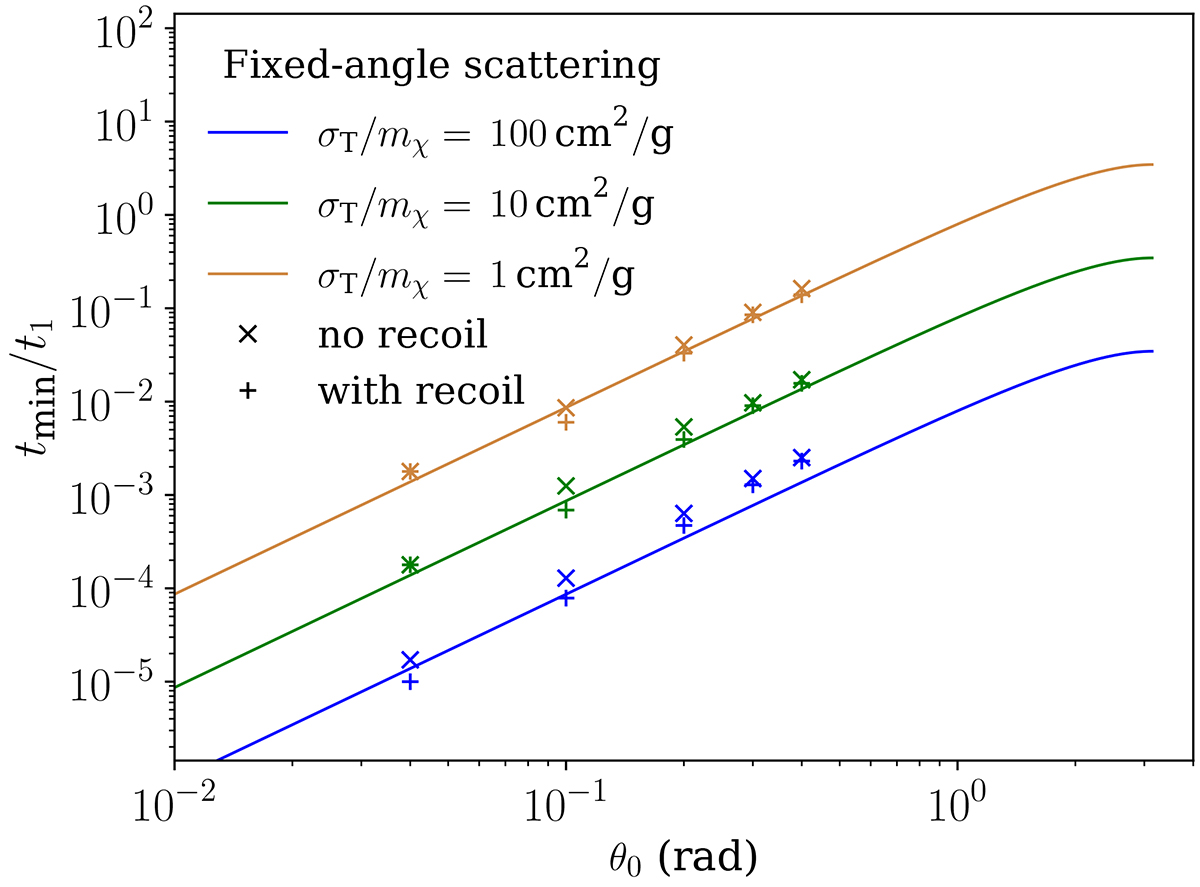Fig. A.3.

Download original image
Validity check of the effective small-angle approach (fSIDM, scheme b) as compared to an explicit treatment of angle dependence (rSIDM, scheme c). Shown is the minimal timescale tmin after which the angular distributions obtained for the deflection test problem solved with the fSIDM and the rSIDM method agree with each other. Cross symbols show the numerically determined minimal agreement time tmin, for three values of σT/mχ and for the set-up with and without recoil in beam-target scattering, respectively. Lines show the analytical prediction for tmin from Eq. (32). Here we assume a differential cross section for which all individual scatterings occur with a fixed angle θ0 (shown on the x-axis). The numerically more efficient effective small-angle approach is advantageous if tmin is much smaller than the typical dynamical scale of the system, given by tdyn = (1, 0.1, 0.01)⋅t1 for σT/mχ = (1, 10, 100) cm2 g−1, respectively. This is safely the case for scatterings with θ ≲ 1. Details on the fixed-angle scattering are presented in Appendix I.
Current usage metrics show cumulative count of Article Views (full-text article views including HTML views, PDF and ePub downloads, according to the available data) and Abstracts Views on Vision4Press platform.
Data correspond to usage on the plateform after 2015. The current usage metrics is available 48-96 hours after online publication and is updated daily on week days.
Initial download of the metrics may take a while.


